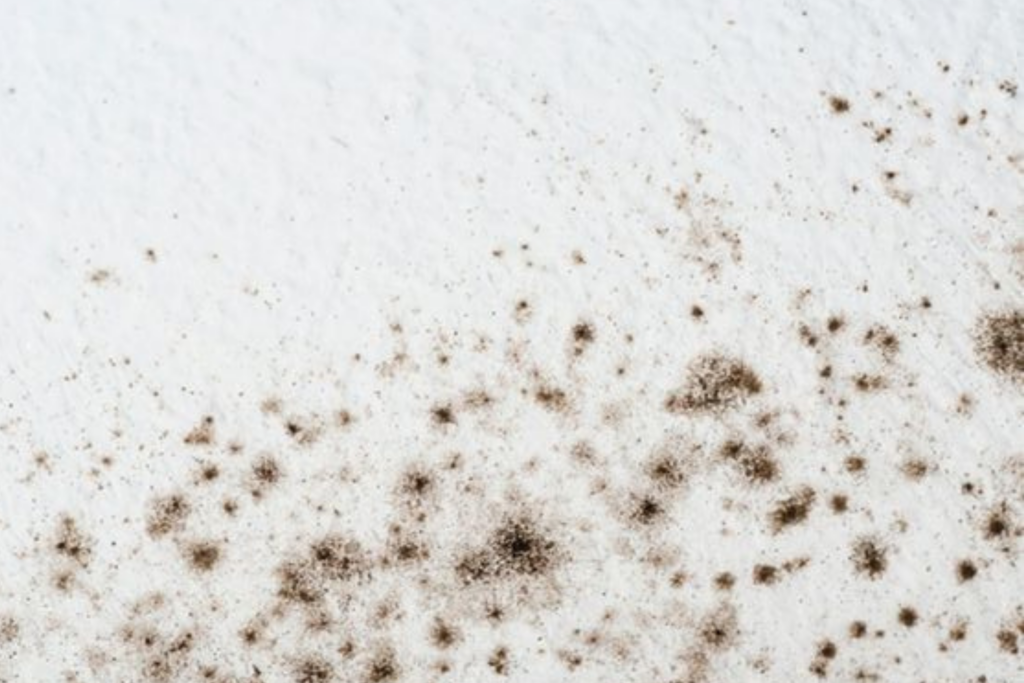BLUE LIGHT CARD DISCOUNTS available across all therapies and packages. Thank you NHS.
Unveiling the Threat of Mould: Understanding Mould Illness and Toxicity
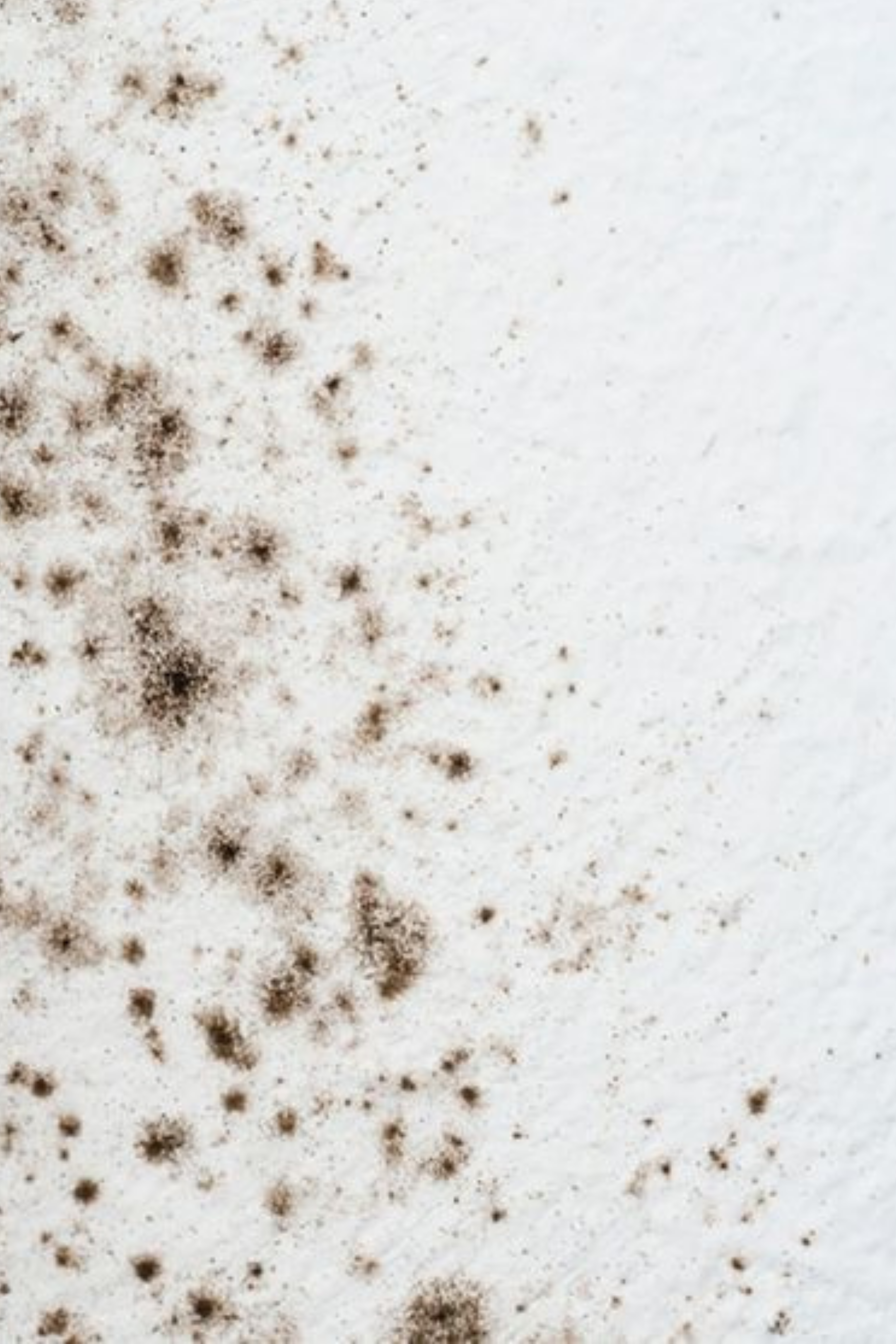
In recent years, mould has increasingly become a reoccurring story and focal point in news headlines, shedding light on the significant health risks it poses to individuals and communities alike. My own life was derailed significantly by the presence of mould in the home, and as a healthcare practitioner, I have witnessed and continue regularly to work with the profound impact that mould-related health issues can have on people’s lives.
It is with this understanding and a sense of urgency that I embark on this three-part series to delve deeper into the complexities of mould illness and toxicity. Across these instalments, we will navigate the intricate web of mould-related health concerns, equipping ourselves with the knowledge needed to safeguard our well-being and that of our loved ones, as well cover detailed strategies to draw on for the journey back to better health. Ending with resources and guidance on how to navigate mould illness and toxicity and nurture the body back to health.
Here in Part One, we lay the foundation by providing a comprehensive overview of mould illness and toxicity, exploring the diverse range of health effects mould exposure can entail. We will uncover the various types of mould and the factors contributing to its growth, highlighting the insidious nature of this pervasive fungus. Additionally, we will delve into the importance of understanding and distinguishing between mould-related health issues, emphasising the critical need for increased awareness and proactive measures to address this growing public health concern.
I write this not merely as a post to collate information and educate but as a call to action. The more we collectively understand and learn about the impact mould has to our health and the more it shows up in clinical practice the harder we must work to save people from the often-devastating consequences of mould exposure, from respiratory ailments, neurological complications, severe eczema, impacted fertility and more. It is clear that more must be done to recognise, protect, and assist those who suffer from mould-related health issues. Join me on this journey as we unravel the complexities of mould illness and toxicity, empowering ourselves to create healthier environments, and foster a greater sense of well-being for all.
What is Mould? Understanding types, growth conditions and environmental impact
Mould is a type of fungus that thrives in various environments, both inside and outdoors. Millions of years old, it is a natural and important part of our environment, playing a key and crucial role in ecosystems through the breaking down of organic matter. Many species of fungi are beneficial or completely harmless to humans-think of the mushrooms we eat and the yeasts we use to make bread. However, when mould spores find conducive conditions for growth within our homes, they can pose significant health risks to all inhabitants.
Definition of Mould
Mould refers to a vast and diverse group of fungi that reproduce by producing spores. Typically occurring in moist, warm conditions, but with the ability to also survive harsh, dry environments, these spores are microscopic and ultimately present everywhere, especially in the damp U.K island that many of us call home. Spores float around in the indoor and outdoor air, and when they land on a hospitable surface, they can then start to grow. Varying in appearance, mould comes in various colours, textures and shapes, ranging from fuzzy patches to slimy coatings and dark spots.
Common types of Mould
Several types of mould commonly found indoors and contaminated foods include:
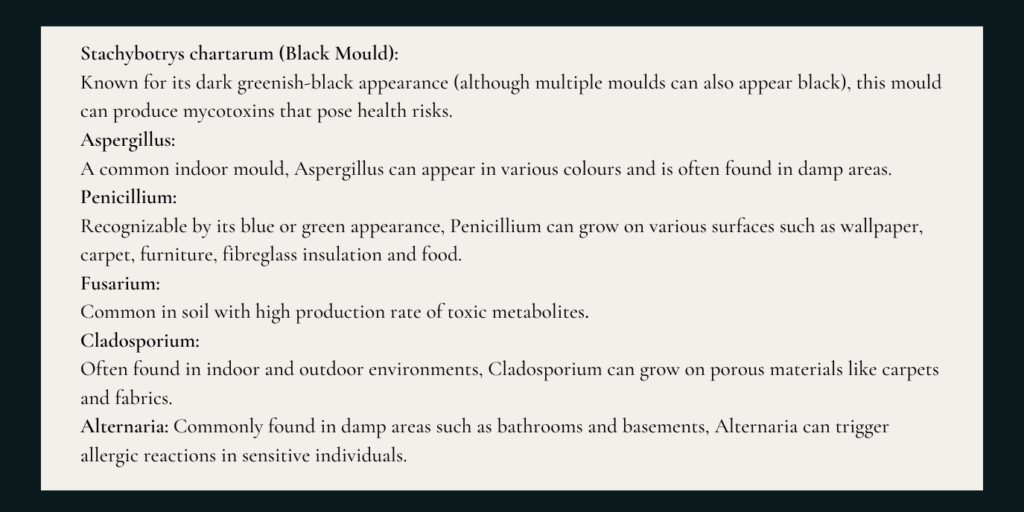
Factors contributing to mould growth
Mould requires specific conditions to grow and thrive inside. Understanding these factors is essential for preventing mould growth and minimizing its impact on indoor environments. By addressing moisture issues, improving ventilation, and maintaining cleanliness, individuals can hopefully reduce the risk of mould proliferation and its associated health hazards, working on creating an environment that is inhospitable to them taking hold.
- Moisture: Mould thrives in damp and humid environments. Water leaks, flooding, or high humidity levels can create ideal conditions for mould growth.
- Warmth: Most moulds prefer temperatures between 70°F and 90°F (21°C and 32°C) for optimal growth.
- Organic Material: Mould feeds on organic matter such as wood, paper, and fabric. Any surface containing organic material can potentially support mould growth.
- Poor Ventilation: Inadequate ventilation can lead to stagnant air and moisture build up, promoting mould growth in enclosed spaces.
- Low Light: While mould can grow in both light and dark environments, it tends to thrive in areas with limited exposure to light, such as basements and closets.
Distinguishing between Moulds and Mycotoxins
Moulds and mycotoxins are both components of the complex ecosystem surrounding mould exposure, but they serve distinct roles and present different health risks. Whilst they are intertwined in the context of this guide, it’s essential to differentiate between the two. Moulds serve as the primary organisms responsible for colonisation and growth, while mycotoxins represent the toxic by-products produced under certain conditions. Understanding this distinction is crucial for assessing the risks associated with mould exposure and implementing effective strategies for prevention and remediation work.
- Moulds are the fungi that reproduce by releasing spores into the environment. They can colonize a wide range of surfaces, including food, building materials, and organic matter. While moulds themselves can cause allergic reactions and respiratory issues through spore inhalation or direct contact, they can also produce secondary metabolites known as mycotoxins.
- Mycotoxins are toxic compounds produced by certain moulds as a defence mechanism. These secondary metabolites can contaminate food, water, and indoor air, and it is these mycotoxins that are responsible for the significant health risks to humans and animals. Mycotoxins can enter the body through ingestion, inhalation, or skin contact.
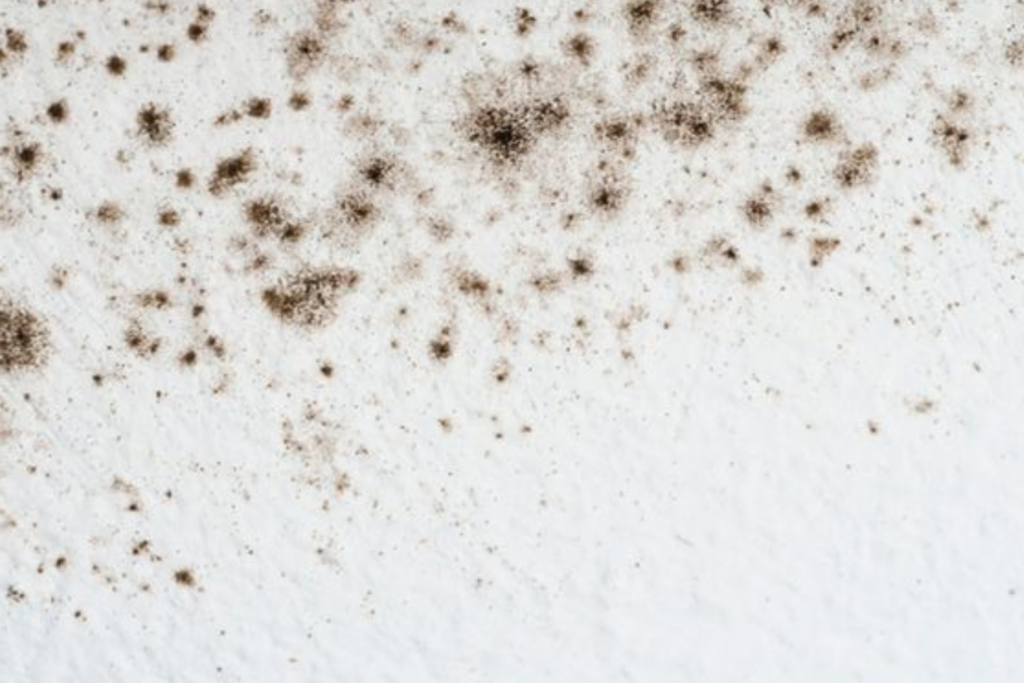
Exploring common Mycotoxins: Understanding the diverse risks
Several hundred different mycotoxins have been identified, with only a small percentage of that gaining adequate attention due to their severe effects on human health and their occurrences in food.
Common mycotoxins associated with mould exposure encompass a diverse range of compounds produced by various moulds. These mycotoxins can contaminate indoor environments through the growth and proliferation of mould on organic substrates such as building materials, food, and household items. Research reports that 25 percent of the world’s crops, including grains, nuts, wine, spices, and coffee, are contaminated by mycotoxins due to poor harvesting practices, improper food storage, and damp conditions during food transport and processing
Here are some of the most common and prevalent mycotoxins and the moulds that produce them.
Alfatoxins:
- Produced primarily by Aspergillus flavus, Aspergillus parasiticus and Aspergillus versicolor moulds.
- Commonly found in food products such as nuts, grains, and legumes.
- Aflatoxins are potent carcinogens and can also cause liver damage, immune suppression, and growth impairment.
Alfatoxin M1:
- A metabolite of aflatoxin B1, primarily produced by moulds such as Aspergillus flavus and Aspergillus parasiticus.
- Found in milk and dairy products derived from animals fed contaminated feed.
- Aflatoxin M1 has been linked to liver damage and carcinogenic effects, particularly in individuals with chronic exposure.
Ochratoxins:
- Produced by moulds from the Aspergillus and Penicillium genera, including Aspergillus ochraceus and Penicillium verrucosum
- Found in a variety of food items, including cereals, coffee, wine, and dried fruits and multiple indoor environment surfaces such as wallpaper, carpet, furniture and insulation.
- Ochratoxins have been associated with kidney damage, immunotoxicity, and carcinogenic effects.
Trichothecens:
- Produced by various moulds, including Fusarium species (e.g., Fusarium graminearum, Fusarium sporotrichioides) and Stachybotrys.
- Commonly found in grains, cereal products, and indoor air. They proliferate in water damaged buildings.
- Trichothecenes can cause a range of health effects, including nausea, vomiting, diarrhoea, immunosuppression, and neurological symptoms.
Fumonisins:
- Produced primarily by moulds of the Fusarium genus, such as Fusarium verticillioides and Fusarium proliferatum.
- Contamination occurs in maize (corn) and maize-based products. Quite prevalent in temperate climate conditions.
- Fumonisins have been linked to oesophageal cancer, neural tube defects, and liver damage in animals.
Gliotoxins:
- Produced by moulds such as Aspergillus fumigatus and Aspergillus flavus.
- Found in indoor environments, particularly water-damaged buildings.
- Gliotoxin is an immunosuppressive mycotoxin and has been implicated in the pathogenesis of invasive aspergillosis and other fungal infections.
Mycophenolic Acid:
- Produced by Penicillium and Aspergillus species.
- Commonly found in indoor environments, particularly water-damaged buildings.
- Mycophenolic acid has immunosuppressive properties and may exacerbate respiratory symptoms in susceptible individuals.
Patulin:
- Produced by moulds such as Penicillium expansum and Aspergillus clavatus.
- Found in fruits (particularly apples) and fruit-derived products.
- Patulin has been linked to gastrointestinal irritation, immune suppression, and potential carcinogenic effects.
Zearalenone:
- Produced primarily by moulds of the Fusarium genus, such as Fusarium graminearum and Fusarium culmorum.
- Contamination occurs in grains, particularly corn, wheat, and barley.
- Zearalenone is known for its estrogenic effects and has been linked to reproductive issues, including hormonal imbalances and infertility in animals.
Sterigmatocystin:
- Produced by moulds such as Aspergillus versicolor and Aspergillus nidulans.
- Found in a variety of food products, including grains, nuts, and spices.
- Sterigmatocystin is considered carcinogenic and has been associated with liver cancer, lung cancer, and other malignancies.
Unravelling the health effects and impact of Mould Exposure
Exposure to mould can trigger a range of health issues, affecting various systems in the body. Mould exposure affects everyone differently. Symptom severity depends upon many factors, including a person’s age, sex, genetics, underlying health conditions, lifestyle, length of exposure time and the level of toxicity of the moulds to which they are exposed. In the same environment, some people may be severely affected while others may seem completely at ease. Those who are the most mould sensitive tend to have full body reactions to mould, which can affect many bodily systems at once.
The health reactions to mould that people have generally fall into three distinct categories, each with its own set of symptoms and implications.
- Mould Allergies
This includes typical allergy symptoms such as nasal congestion, runny nose, itchy or watery eyes, skin rashes and asthma and in those susceptible to it.
- Mould Infections/Fungal Colonisation
Those who are immunocompromised may be susceptible to infections in their sinuses and lungs, which may make them more likely to get additional respiratory infections like bronchitis or pneumonia.
- Toxic Mould Illness or Sick Building Syndrome (SBS)
This mould-based illness from mycotoxins can range from mild to severe and affects many body systems. Symptoms can include fatigue, weakness, aches and pains, muscle cramps, ice pick pain, headaches, light sensitivity, red eyes, blurred vision, tearing, sinus problems, cough, shortness of breath, abdominal pain, diarrhoea, joint pain, morning stiffness, memory issues, focus/concentration issues, word recollection issues, learning difficulties, confusion, disorientation, skin sensitivity, mood swings, appetite swings, night sweats, temperature dysregulation, excessive thirst, increased urination, static shocks, numbness, tingling, vertigo, metallic taste and tremors.
The impact of mould on human health is multifaceted and can manifest in diverse ways. The extensive list of symptoms associated with toxic mould illness underscores the complexity and severity of this condition, which can range from mild to severe. Moreover, the overlap of symptoms with other health conditions can complicate diagnosis and treatment, with sensitive people-myself included-falling into multiple categories, with allergy reactions generating and contributing to an additional layer to increasingly inflammation. Fungal colonisation can also occur in the different context of dysbiosis within the digestive tract and microbiome, with mould toxicity intricately linked to these internal fungal issues causing a further exacerbation of disease.
Unveiling Mould Illness: Identifying symptoms and assessment
There are many possible combinations of the mould issues outlined above and the landscape of the diseases can quickly get complicated and/or confusing. Allergies to mould can exist in the absence of mould infection, colonisation and SBS, and SBS can take hold without the presence of an allergy or any fungal colonisation within the body. Colonisation can exist without an allergy to any mould antigen trigger; however, toxicity is going to exist as the mould colonisation will be releasing mycotoxins. The necessary targeting of this colonisation, in the pursuit of better health, will expose you to increased mycotoxins whilst you navigate the path forwards. This is because the moulds present, will be releasing mycotoxins internally in your body, and killing them will expose you to even more mycotoxins as they die off.
You may find you only have one of these conditions, or two, or three. If you’re unlucky as I was, an allergy will meet toxicity, result in colonisation, which will continue triggering the allergy and the results will be catastrophic. However, there is always a way through, and whilst a mould allergy will sadly stick around forever and must be managed accordingly, the other two are holistically fixable and can be made a thing of the past.
Mould Illness vs Mould Allergy
An allergy is a type of immune response. When your body views something as a threat (albeit mistakenly) it takes steps to attack that threat to in order to protect you. Anything that stirs up an immune response is called an antigen (the perceived threat), and allergens such as foods, pet dander, pollen and a host of other environmental triggers are antigens that can cause an immune reaction. One way the immune system launches its defence is by producing antibodies in response to that threat. Antibodies are proteins made of white blood cells. They response to pathogens like bacteria, viruses and other toxins like mould.
Immunoglobulin E and immunoglobulin G (IgE and IgG) are two types of antibodies that fight off antigens like mould. Distinct in difference, IgE is classified as a true allergy and IgG is often referred to as a sensitivity-read more on the discussion and differences here. Symptoms overlap but prove different in severity and reaction onset time. IgE can prove life threatening, but both bring discomfort and pain. If you have a mould allergy, your body will produce IgE or IgG antibodies to mould if it encounters it, and if you breath in or ingest mould and/or the mycotoxins they release, your immune system will launch an attack.
If you’ve found yourself developing sensitivities or allergies to a number of things that never posed problems before, it can be worth looking into mould exposure as well as other toxins and trigger points impacting your life. Taking the time to review with a professional, all the elements that could be causing the immune system to lose tolerance and increase in reactivity. Mould is proving a key contributor in modern times to the undermining of balanced immunity.
Chronic Inflammatory Response Syndrome (CIRS)
CIRS stands for Chronic Inflammatory Response Syndrome. It is a condition and collection of symptoms where individuals experience a heightened inflammatory response to various environmental triggers, including exposure to mould and mycotoxins. Initially thought to be caused by mould exposure only, and referred to as Biotoxin Illness or Mould Illness, further research has indicated that bacteria and various viral infections are also implicated in its development.
As the result from ongoing exposure to biotoxins produced by mould, amongst potential other toxins, this dysregulated immune response creates a range of symptoms affecting multiple body systems. CIRS can manifest with symptoms similar to those of other chronic illnesses, making analysis and assessment challenging without proper evaluation by a healthcare professional familiar with the condition. Treatment typically involves addressing the underlying environmental triggers, reducing exposure to mould and mycotoxins, and supporting the body’s natural detoxification processes.
General Signs and Symptoms of CIRS
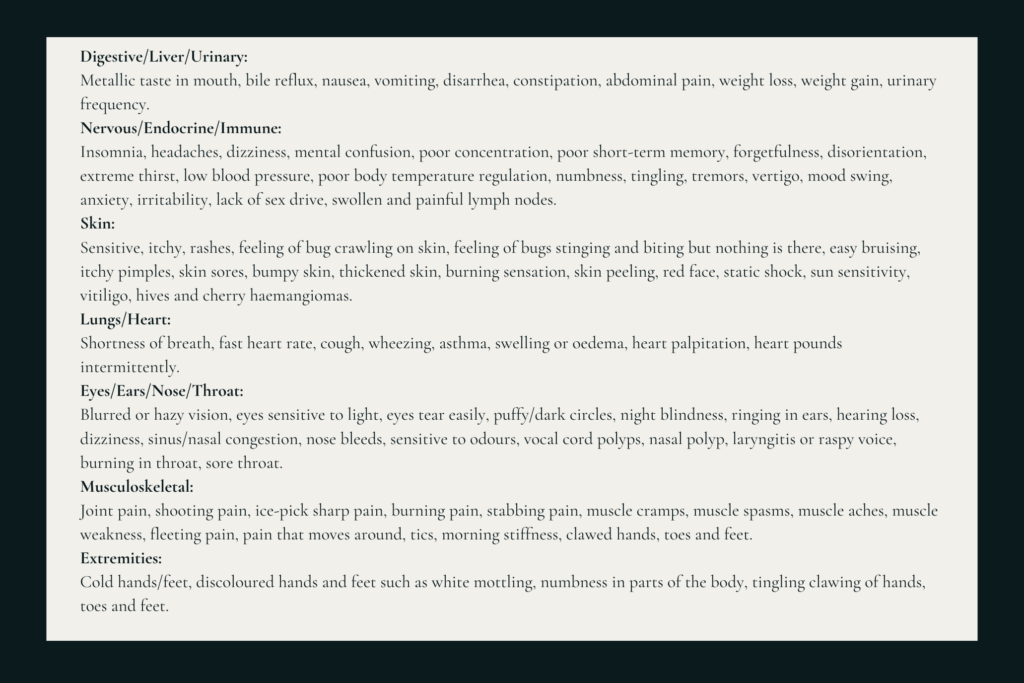
Assessing Mould Toxicity, Illness and Allergy
There are thankfully a multitude of testing options available to establish sensitivity to mould and to highlight to presence of mycotoxins in each of our systems. It is vitally important to do this under the guidance of a qualified practitioner, well versed in mould issues, as testing alone can’t provide true context, nor pave the way for the important protocols required to navigate your way back to health. Comprehensive tests will be discussed in part 3 as we address what to do when faced with mould allergies and illness. With useful guidance on protocols that cover all categories of mould disease.
Conclusion
As microscopic spores drift through the air, finding purchase in damp corners and forgotten crevices, they set the stage for a cascade of health effects that can impact individuals in a myriad of ways. Mould illness and toxicity represent a multifaceted challenge, with repercussions that extend far beyond mere physical discomfort. From respiratory distress, neurological complications, skin irritation, immune suppression, digestive issues, and more, the health impacts of mould exposure are as extensive and diverse as we are.
Despite a prevalence and the severity of consequences, mould still remains a relatively misunderstood and underestimated threat. The importance of this poor understanding and acknowledgement cannot be overstated, as ignorance or negligence in addressing mould-related concerns can lead to prolonged suffering, exacerbated health complications, and costly remediation efforts for both home and systemic whole body and mind recovery.
Hopefully this post has provided insight into the importance of keeping mould growth out of your home environment and equipped you with the knowledge to explore whether mould could be contributing to or be the basis of your symptoms.
In Part 2
Looking ahead, Part 2 will focus on identifying and preventing mould exposure, providing practical tips for recognising mould in indoor environments, implementing effective prevention strategies, and managing mould-related issues as and when they arise. We’ll delve into the importance of professional mould remediation and the role of proper ventilation and maintenance in creating healthier living spaces. In Part 3, we’ll shift our focus to taking proactive steps for health and well-being in the face of mould-related challenges. Exploring the strategies and protocols that best meet the challenge of guarding and supporting the body against these toxic compounds, we’ll address the importance of seeking professional help for mould illness and allergy, and strategies for supporting overall health and immune function in mould-affected environments.
For product recommendations to safeguard your health and support your recovery from mould toxicity, allergy or illness, have a look here.
